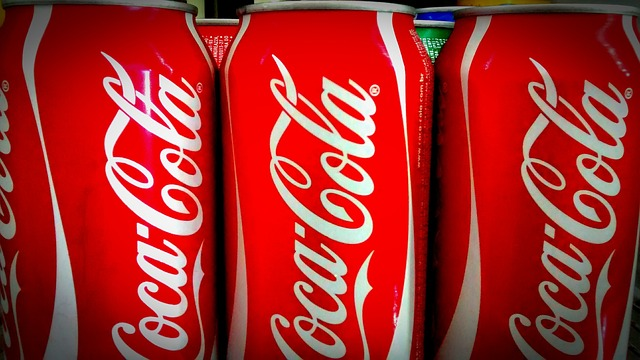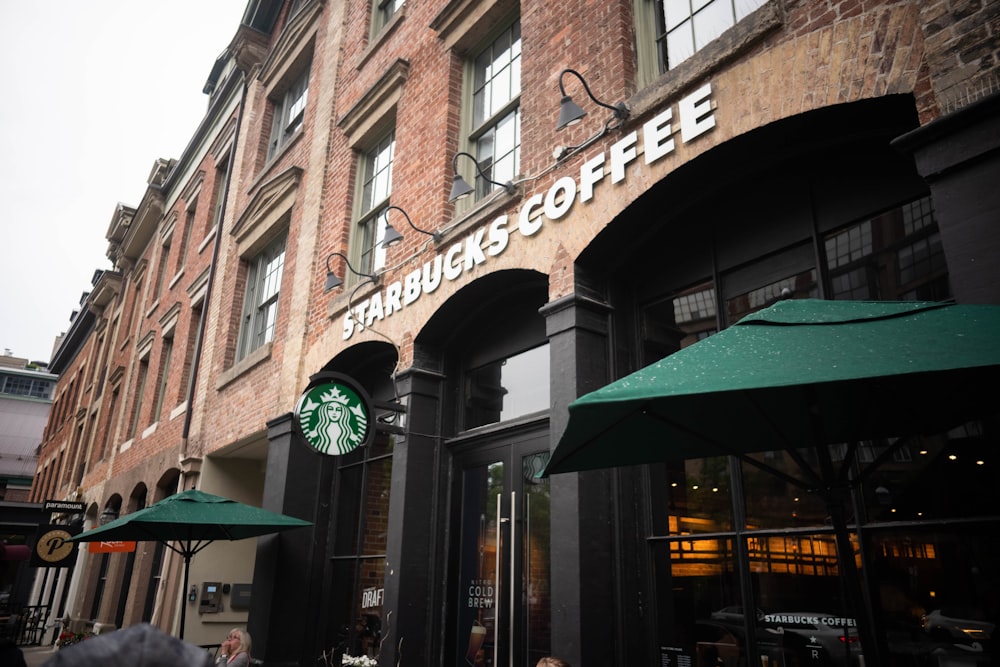Marketing mix can make or break a product’s success. We have put together the best marketing mix examples of leading brands for your understanding and a guide to help you craft an effective marketing mix strategy for your brand.
What is Marketing Mix?
Let's start with the Marketing mix definition before moving on to the guide.
A marketing mix is a blend of business strategies brought into execution that make up the overall marketing strategy for a product.
Typically, marketing mix collectively includes the 4 Ps of marketing: product, price, place, and promotion.
With dynamic changes in the business environment, these four Ps were further expanded into the 7 P's of marketing mix to include: people, process, and physical evidence.
The intersection of these factors leads to the formation of a distinct marketing strategy that is tailored for a brand. Having a marketing mix that is compatible with your brand values is crucial for the success of a company.
Origination of the 4 P's of Marketing Mix
Prof. James Culliton was the first one to mention the marketing mix in the late 1940s. Later his colleague, Neil Broden published an article - The concept of the marketing mix.
Jerome McCarthy first introduced the concept of the 4 P's of marketing mix in his book “Basic marketing: A managerial approach”.

Why is Marketing Mix important?
Imagine if Tiffany diamonds were sold in Walmart.
Or McDonald’s was located in remote locations.
Or Red Bull was advertised on a kid’s Television channel.
Or an artist was the brand ambassador of Nike.
This would have gone terribly wrong, and these brands might not even be in the market today.
The slightest angle change in a marketing mix can tremendously impact the market you are targeting. Every element must be selected carefully after rigorous market research and analysis.
A right marketing mix ensures you are -
-
creating a product that solves a problem
-
selling it at the correct price
-
promoting it to your target customers
-
distributing it at a place easily accessible by the consumers
All these factors need to work in tandem to ensure the creation of a well-oiled marketing engine.
Is Marketing Mix rigid in nature?
The marketing mix isn’t set in stone. It ebbs and flows in alignment with the dynamic changes in the business environment and company growth. Often a company might test various combinations of the marketing mix elements to settle on marketing tactics that give the highest returns. For businesses looking to refine their strategies—whether in consumer products, B2B services, or law firm marketing— consulting with professional essay writers can provide valuable insights on how to effectively structure their marketing efforts.
Law firm marketing, for instance, requires a tailored approach that balances professionalism with visibility. From optimizing online presence and leveraging thought leadership content to fostering client trust through testimonials and case studies, legal practices must adapt the traditional marketing mix to resonate with their unique audience while complying with industry regulations.
With that let’s dive into the world of marketing mix with marketing examples from leading brands around the world to give you a practical understanding.
4 P's of Marketing Mix with Examples
A marketing plan must be based on thorough market research and analysis of the many factors of marketing. A marketing design without a solid blueprint is like aiming in the dark, you’ll never hit the target. Understanding the 4 P’s of marketing is crucial for devising a marketing scheme that hits home.
Here are the 4 P's of marketing mix with examples.
Product Marketing Mix
Product is at the core of all marketing strategies. The product attributes don’t only refer to tangible goods but also intangible service products and ideas. It is what a company has to offer to its customers.
A great product is at the center of a brand’s success. Noteworthy marketing tactics can get the product in front of the target customers and get them to try it once, but after that, the product is on its own. The product must have the potential to survive and thrive in the market.
The product must solve customers’ problems efficiently, and better than others in the market, otherwise, customers won’t buy it. The question is, what’s in it for them?
Product marketing refers to product benefits, market research, product features, design, quality, technology, and warranties.
To develop a product mix, a marketing manager takes into consideration the following questions:
-
Who is your target market?
-
What are their pain points or problems?
-
What quality product are they looking for?
-
What is your competitor’s offering?
-
How can you gain a competitive advantage over them?
-
How large is the target market?
-
What pain point are you solving?
-
Which product features and benefits solve that problem?
Apart from the above checklist, feedback from the customers about what they like or dislike about the product is taken further to mold the product to suit their needs.
This will help you craft customer-centric marketing instead of product-centric.
Product Marketing Mix Example
Apple's unique selling proposition is its product marketing mix by producing products with innovative features, advanced technology, and sleek design. From their iconic iPhones to their ingenious MacBooks, Apple’s products are the perfect combination of form and function. Apple’s product mix includes more than just hardware. Their services and add-ons make their products irresistible. Customers have access to the world of entertainment and convenience with iTunes, iCloud, and Apple Music.
Apple treats its customers like a kind by providing a simple user interface, exceptional support, and warranty claims. Apple is a legendary marketing example everyone must take notes from.
Source: Apple Website
Source: Unsplash
Price Marketing Mix
Price is the money paid by the customers to own, access, or avail of your product. Pricing strategies must be profitable to the company. Prices are determined based on the cost incurred, the expected profit margin, and how much the customers are willing to pay.
Does your product solve a problem better than others, is it sold for an appropriate price, and is it worth the price? Based on your business strategy, product prices can be luxury, premium, or bargain price.
Price marketing mix elements include pricing strategy, payment terms, credit policy, discount, allowances, and payment mode.
To develop a pricing strategy, the marketing manager first determines:
-
The income range of their target consumer
-
Brand’s value perception by the customer
-
How much are they willing to pay?
-
How much do their competitors charge?
-
Do you want to adopt a luxury, bargain, or premium pricing strategy?
-
How will your price portray your brand?
Premium prices give the impression that the brand must be superior. The right price is the one that meets your profit margins and keeps more customers happy, a win-win situation.
Price Marketing Mix Examples
Coca-Cola uses a competitive pricing strategy for penetrative marketing. It is a pricing expert such that it matches the competitor’s prices head-on combined with a value-based pricing approach to push discounts for stimulating higher sales. The business is adaptable and it also changes its prices to meet local laws and market conditions.

Another example is Walmart which uses Everyday Low Prices (EDLP) pricing strategy that entails selling products at a low price to attract more customers, higher sales volume, and increase profits. Walmart does this by buying products in massive quantities from all over the world and use economies of scale to sell products at high discount rates depending on the demand.

Source: Walmart Website

Source: Tech Crunch
Place Marketing Mix
The third P, Place refers to the chain through which the products go from manufacturer to customer. This chain is determined based on who is the target audience, where will you find them, and how will you reach your product to them.
The quicker the goods travel from production to point of sale, the higher customer satisfaction.
Place mix determines the distribution channels and place where the product will be sold like online/eCommerce stores, physical locations like retail, wholesale, convenience stores, brand owned outlets. It is significant to research where your customers will be looking for your product and how to best serve them.
Place marketing mix elements include warehouse, transport, distribution channel, inventory control, and areas covered.
To determine the place marketing mix strategy, marketing managers find the answers to the following questions:
-
Where will your customers find your product?
-
Where will you sell your products?
-
Will they be available in eCommerce stores, retail stores, or brand store chains?
A well-optimized distribution channel is even more important for retail businesses. You can read our marketing mix case studies on Costco, Pepsi, or Airbnb to get more perspective on how they manage their distribution.
Place Marketing Mix Examples
McDonald’s has more than 36,000 franchises and company-owned outlets all across the globe. It also has drive-ins, online ordering through its app, and food delivery partners. Consumers can either dine at the restaurant itself or get a takeaway at their convenience. McDonald’s is located in easily accessible locations providing its customers serving tasty food quickly at low prices.

Source: McDonald's blog
Tiffany & Co is a high-end luxury jewelry brand. It sells its signature Tiffany True only in its stores creating exclusivity and an elite user experience.

Source: Harpers Bazaar
Promotion Marketing Mix
Promotion defines the strategies to make your potential customers aware of your brand. Simply put, how to get the word out about your product to your potential customers. Promotion marketing mix advertises, differentiates your product in the target market, and convinces your ideal customers to buy your product.
Promotional mix elements in the digital age include television ads, publicity, sales promotion, digital marketing, social media ads, personal selling, direct marketing, public relations, print advertising, search engine marketing, and online marketing.
Questions marketing managers ask when devising a promotion marketing mix strategy:
-
Where do your customers hang out online & offline?
-
Where will you promote your product?
-
What promotion tactical marketing tools will you use?
-
What social media influencer database can help to find key opinion leaders?
One needs to perform a lot of trial and error in devising promotional channel strategies. You can read this book to know many possible growth channels - Traction by Gabriel Weinberg
Promotion Marketing Mix Example
Red Bull spends extensively on promotions to stay at the top of its consumer's mind. 'Red Bull gives you wings' tagline has made a home in people’s minds. It’s impossible to plainly say it without dragging out the wings in a high-pitched voice. Red Bull promotes itself as a high-energy drink for intense activity. Its promotion strategy includes creative ads, digital marketing, content marketing, and sponsorship of extreme sports events.
Source: Unsplash
Nike’s target buyers are athletes and people seeking a sporty and healthy lifestyle. It collaborates with high-profile sportspersons to promote its product line and maintain its brand image of being a premium sportswear brand. Michael Jordan, Serena Williams, and Kobe Bryant are a few of Nike’s brand ambassadors. Managers must study Nike's marketing example to devise their promotion strategy.

Source: Footwear News

Source: WWD
The 4 Ps of marketing work in unison to create a brand’s marketing strategy. It’s like a four-legged chair. If one leg is of the wrong height or broken, the chair won’t stay upright.
As businesses became more dynamic, more elements were added to the 4 Ps of marketing to derive an effective marketing plan to meet today’s business needs.
What are the 7 P’s of Marketing Mix?
The 4 Ps were expanded into the 7 P's of marketing mix to keep up with the modern business environment. The additional P’s are Physical evidence, people, and process.
Let’s learn about each one of them with marketing examples.
Physical Evidence Marketing Mix
It is the look and feel of your product and brand. It includes exterior design, interior decor, ambiance, atmosphere, furnishing, packaging, employee appearance, and overall experience.
Physical Evidence Marketing Mix Example
Starbucks serves exquisite coffees in a soothing ambiance. It positions itself as a place where you can work, interact, or hang out in a peaceful atmosphere with utmost ease. The experience Starbucks offers is what makes users choose it over others.
Source: Unsplash
Source: Unsplash
Paperboat’s packaging is vibrant and colorful with unique shapes and sizes because its consumers are children. Kids are attracted to colorful things that catch their eye in an instant. This way Paperboat distinguishes itself in a sea of competitors.
Source: Elephant design
People Marketing Mix
People marketing mix refers to the people involved in the development, distribution, and selling of the product. Personnel is the backbone of a company because they represent the company in front of its consumers and leave an impression. Hiring the right people, and training them thoroughly to match the quality of your brand is crucial for a brand’s success. The people marketing mix includes employees, service providers, sales executives, delivery staff, and work culture.
People Marketing Mix Example
Taj is a world leader in hospitality. It keeps customer satisfaction at the forefront. They train their personnel, right from the front desk to managerial staff, rigorously to provide the best customer experience.


Source: Taj Hotels
Process marketing mix
The process consists of the direct and indirect activities involved in the manufacturing, delivery, and consumption of the product. It also includes customer feedback to solve any inconvenience and give consumers what they need. The efficiency of the process decides the performance of a product.
Process Marketing Mix Example
Starbucks holds customer feedback in high esteem to refine its product offering. Starbucks' “My Starbucks Idea” platform was in operation for nearly 10 years before being retired. It provided consumers with a better way to share their concerns and submit requests. The aim was to give consumers exactly what they want while building a relationship and a loyal customer base.
Source: Braineet

Source: Braineet
Marketing mix elements work in agreement with each other to formulate the right marketing design for a brand. You cannot focus on a single element and call it a day. If there are internal discrepancies between the elements then those must be eliminated to provide the best value to the customer.
Why should you care about Marketing Mix?
The marketing mixes work in unison aiding each other. They are interrelated like the tires of a car, driving the company forward.
A correct marketing mix ensures you target the right buyers, make them aware of your product, position yourself distinctly, and offer a product they want, at a price they are willing to pay, and at a place easily accessible to them.
Each element decides the strategy for other elements. For example, a luxury product with a premium price cannot be sold at indie shops that follow cost-sensitive pricing strategies.
Best Practices to write a Marketing Mix Strategy
Use these best practices to write an effective marketing mix strategy for your product:
Set Goals
Clear, measurable, time-specific and stretch goals for a marketing campaign improve marketing success rate as one works towards a defined outcome. Is your aim to attract more customers, get more sales, differentiate yourself from competitors, enhance brand image, or increase brand awareness?
Perform Market Research
Market research gives a direction and validation to your marketing mix as to whom you need to sell in the first place. It helps define a target audience, finalize product's features, get inspired from competition's promotion tactics, etc. The result is a customer-centric product stand that has a distinct unique selling proposition backed by research.
Incorporate customer feedback
Are your product's benefits truly aligning with your customer's expectations? What is the perceived value of your product in front of your potential customers? Can you increase your product pricing? Should you invest in search engine marketing?
All such present and future product decisions can be made by actively taking customer feedback. You also get a clear data if your marketing mix work on your target audience as strategized.
Get started with your brand's marketing strategy today
The marketing mix is crucial to successfully market your product and achieve marketing goals. Effective marketing mix results in higher customer satisfaction, larger market share, increased sales, and finally soaring profit margins. Now that you have a clear understanding of the marketing mix, it’s time for you to devise a marketing mix plan for your product and achieve those banger sales and profit goals.







 Entrepreneurship
Entrepreneurship

